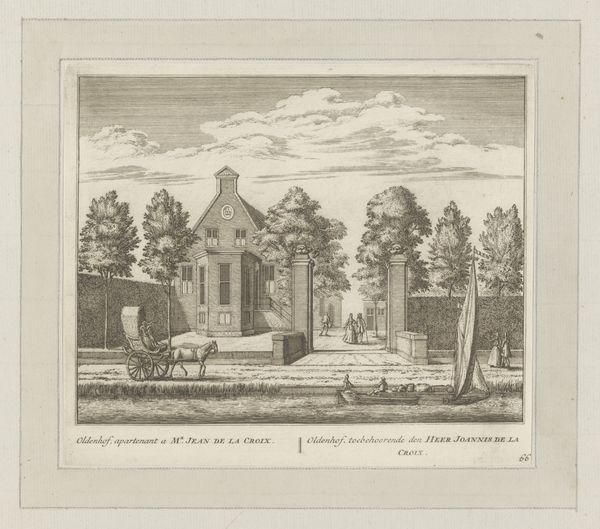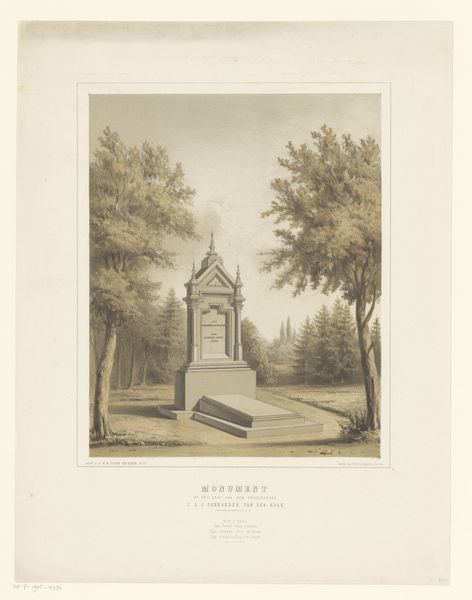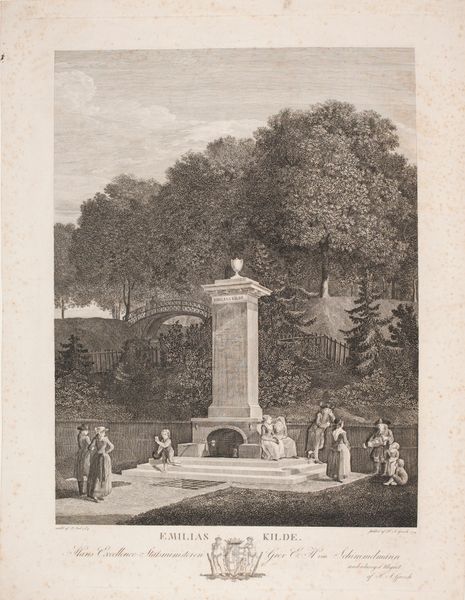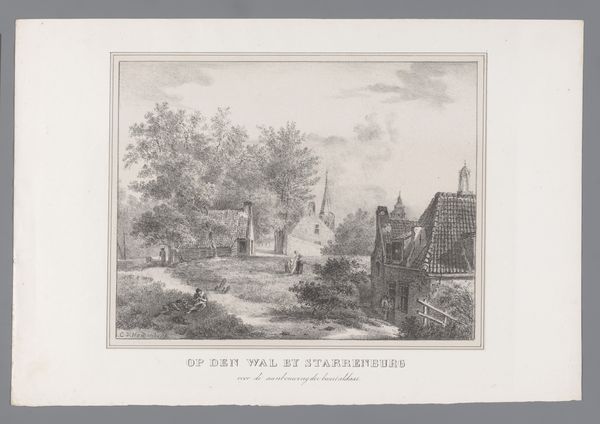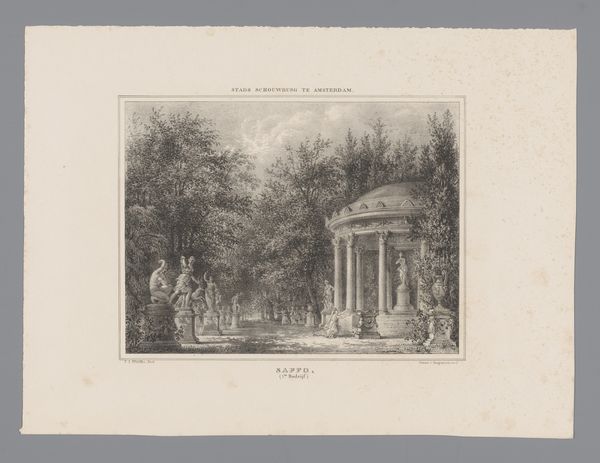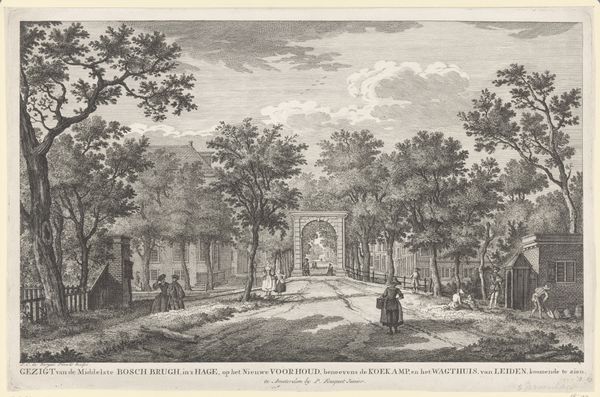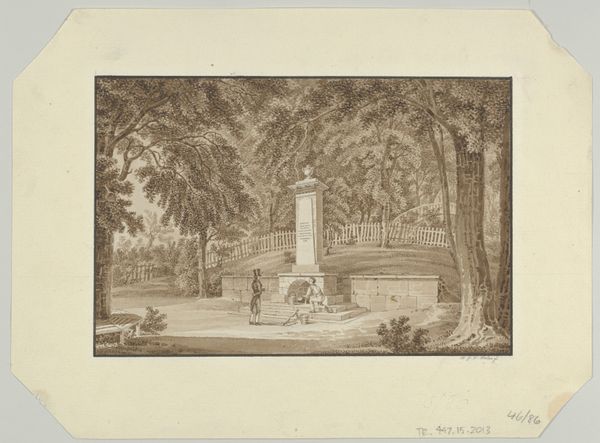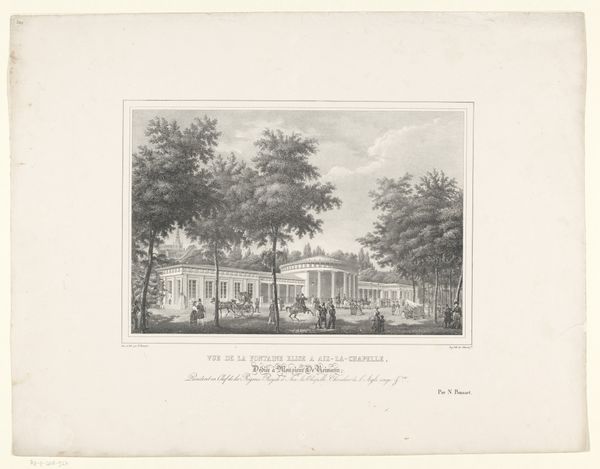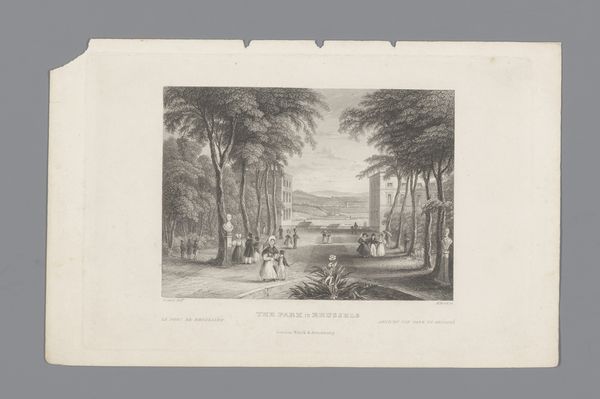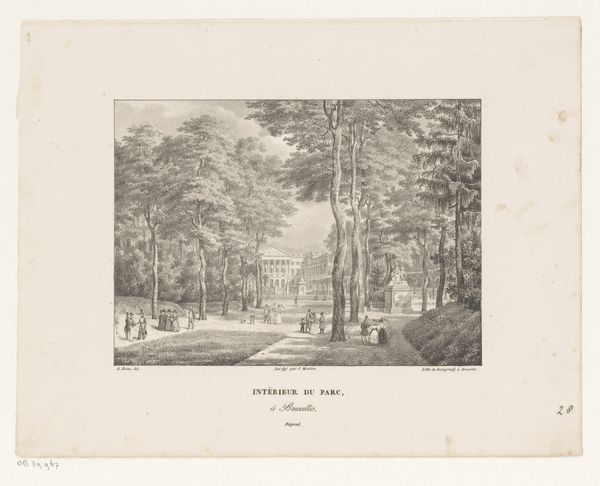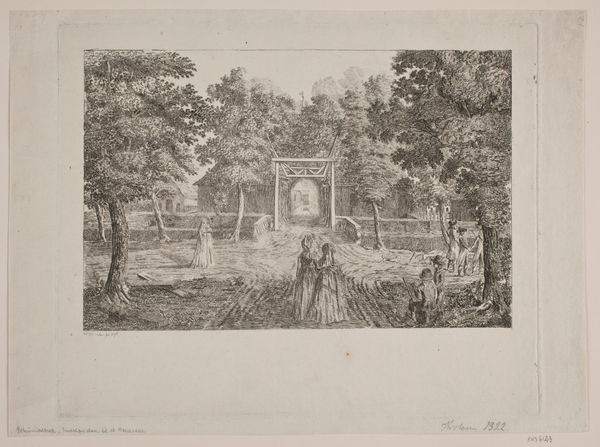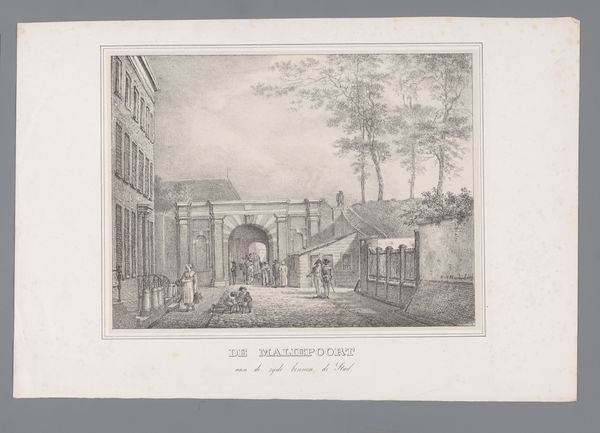
drawing, print, etching, paper, ink
#
drawing
# print
#
etching
#
landscape
#
paper
#
ink
#
romanticism
#
genre-painting
#
academic-art
Dimensions: height 245 mm, width 345 mm
Copyright: Rijks Museum: Open Domain
Curator: Looking at this etching, entitled “Buitenverlijf van Daniël Wyttenbach,” made in 1834 by Wilhelmus van Groenewoud, I'm struck by its serene stillness. Editor: Indeed, there's a melancholic atmosphere. The dense foliage, the muted tones of ink on paper; it all creates a sense of quiet introspection. It certainly speaks to the Romantic ideal of finding solace in nature, but I also see something more nuanced at play. Curator: I see it too. Works like this were often commissioned, documenting the properties of wealthy citizens, almost like visual records of social standing. So, while there's a personal element here—presumably, this was Wyttenbach's retreat—it also reflects the socio-economic landscape of the time. The artwork hints to us of notions tied to propriety. Editor: Exactly! We're not just seeing trees and a family strolling; we're seeing a visual assertion of bourgeois values. Consider the gendered aspects too: women were often relegated to domestic spheres. Their connection with nature became symbolic. Curator: The gates, partially open, are so significant. Are we invited into this space, or are the gates meant to create barriers? How might the family depicted at the foreground respond to our own imagined entrance to their home? Also consider, how has the institutional role of The Rijksmuseum played in shaping perceptions and giving access to this representation? Editor: An excellent point. Even the seemingly idyllic landscape can be unpacked to reveal its inherent power structures and class distinctions. Even that little detail of the dog walking alongside the people must be observed. Curator: And that’s why considering this drawing in the context of its social and political environment—the artistic institutions supporting such pieces—is vital. It helps us understand what it really means to capture and represent the human figure in its interaction with their outdoor scenery. Editor: Ultimately, art becomes this tool, a mirror reflecting not just aesthetic preferences but also deep seated social biases. That notion holds resonance still to this very day. Curator: Indeed. Looking closely allows to explore art’s complicated history. Editor: The layers beneath such peaceful art unveil the deeper socio-political contexts of its era.
Comments
No comments
Be the first to comment and join the conversation on the ultimate creative platform.
